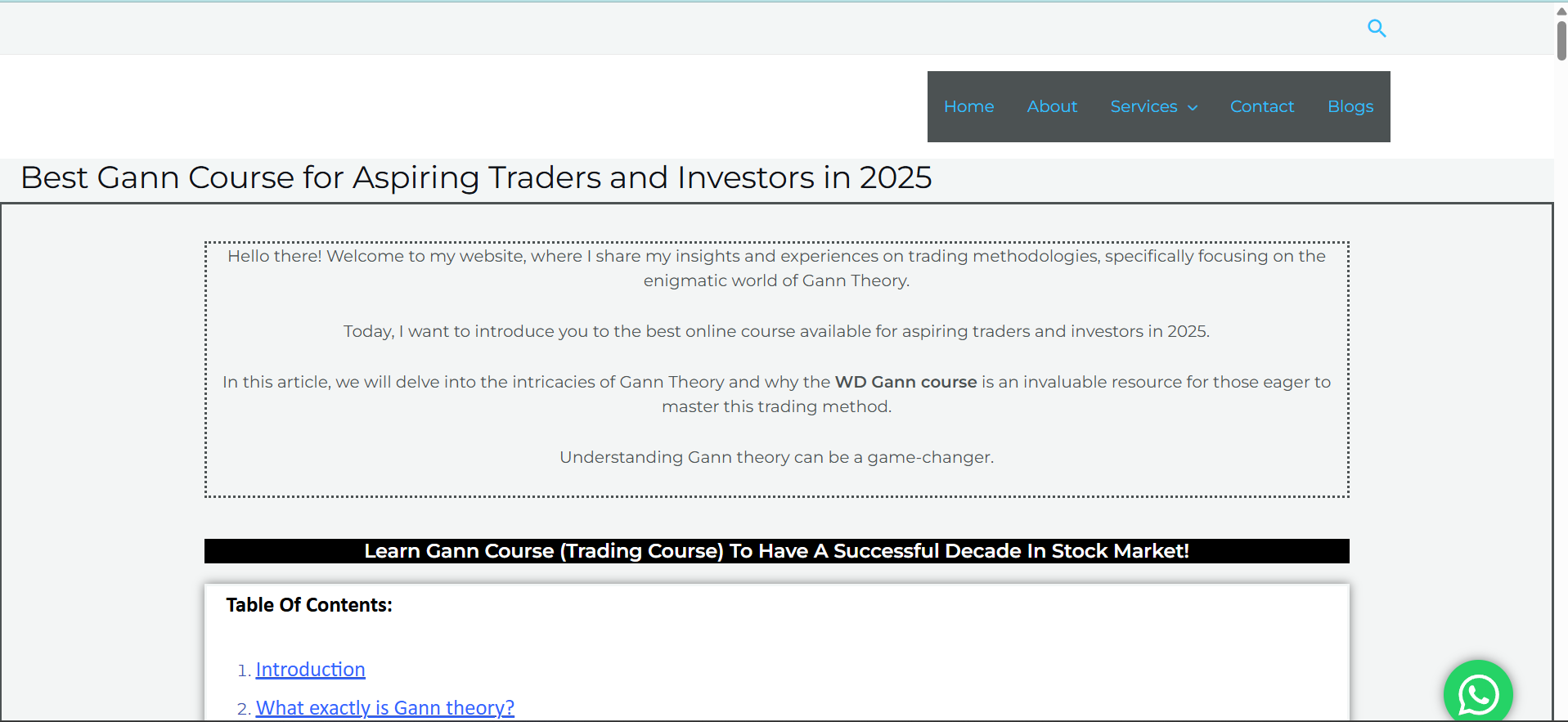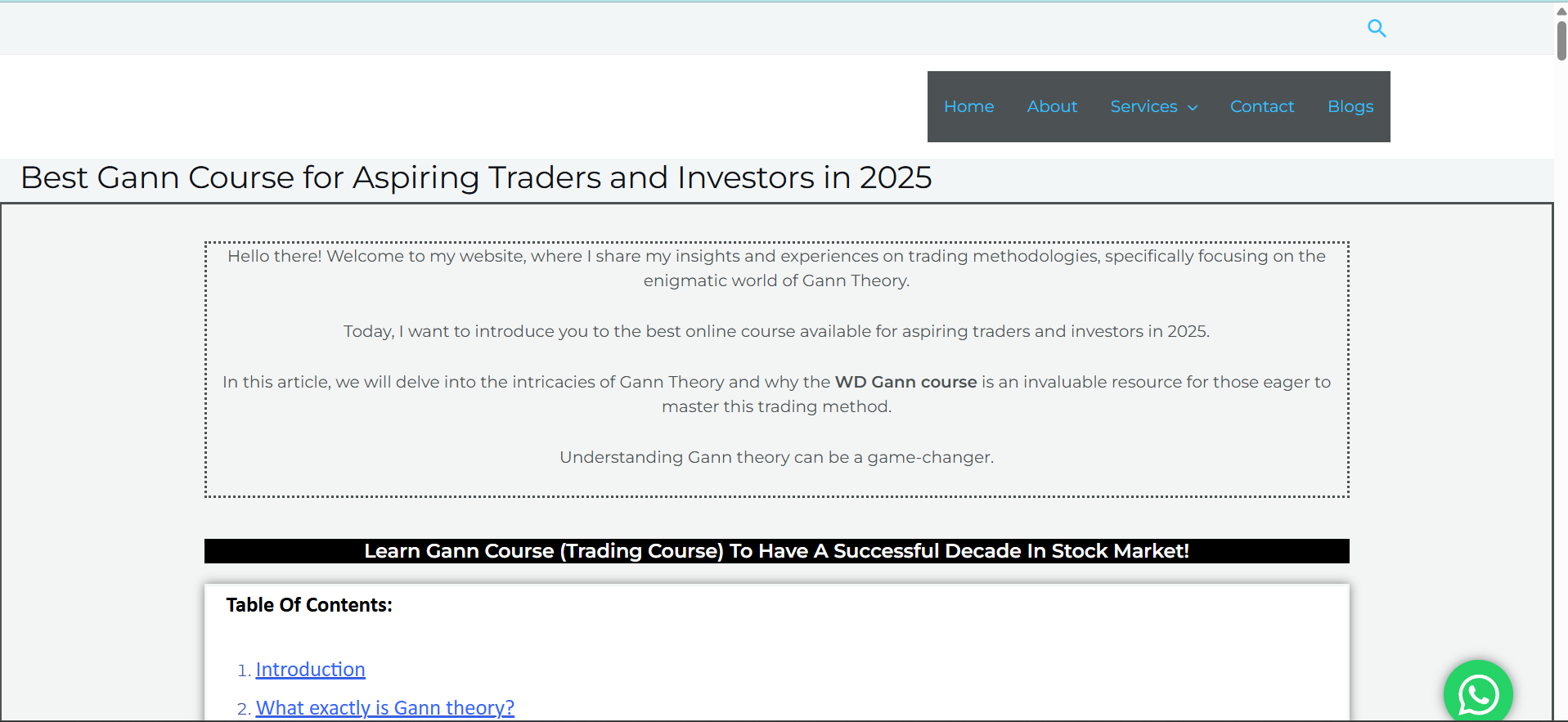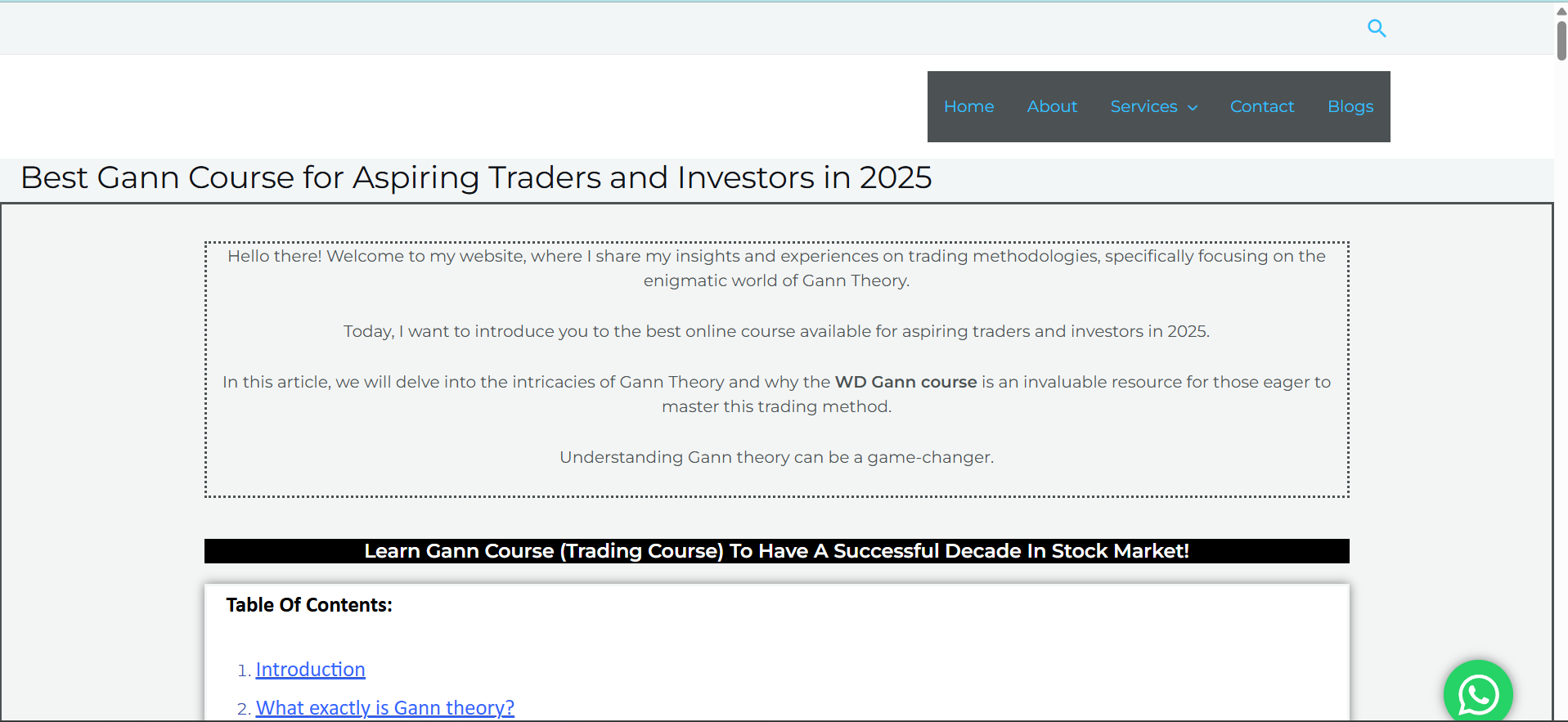The Power of 50%: WD Gann’s Simple Rule That Still Dominates the Markets

Strong 8k brings an ultra-HD IPTV experience to your living room and your pocket.
The Power of 50%: WD Gann’s Simple Rule That Still Dominates the Markets
In today’s world of high-frequency trading, AI-powered algorithms, and complex charting software, it's easy to forget that some of the most powerful trading principles are also the simplest. One such timeless principle is WD Gann’s 50% Rule — a concept that continues to guide traders in identifying key reversal zones with remarkable accuracy.
Gann didn’t rely on guesswork. He combined geometry, time, price, and psychology to decode market behavior. Among all his methods, the 50% retracement level stands out as a psychological and technical anchor — a line where the market often makes its most important decisions.
Let’s explore why Gann placed so much importance on the 50% level and how it continues to serve as a compass for traders worldwide.
What Is the 50% Rule?
WD Gann observed that markets often retrace about 50% of their previous move before continuing in the original direction or reversing entirely. This phenomenon appears across all timeframes and asset classes — from intraday movements to multi-year trends.
also visit ---- niraj course
For example:
If a stock rises from ₹100 to ₹200, the 50% retracement is ₹150.
If it falls from ₹300 to ₹200, a 50% retracement bounce would take it to ₹250.
These levels are not just mathematical midpoints — they’re psychological pressure points. Buyers who missed the move want to enter here. Sellers who are unsure often liquidate positions. That tug-of-war makes the 50% line a natural battleground.
Why the Market Respects the 50% Zone
Unlike Fibonacci retracements like 38.2% or 61.8%, the 50% level isn’t derived from the golden ratio — it comes from market behavior. Here's why it works:
Psychological Comfort
Investors feel more comfortable entering or exiting trades at the halfway point of a trend. It's perceived as a fair price for both buyers and sellers.
Balance Between Bulls and Bears
When a stock retraces to 50%, it signals that both sides have equal influence — it's a moment of equilibrium. The breakout from this point often reveals the real strength.
Profit Taking Zone
Traders who bought early often take partial profits near 50%, especially in trending markets.
Institutional Entry Point
Big players often wait for retracements to add to positions. The 50% level is commonly used as an institutional re-entry level after a breakout.
How Gann Applied the 50% Rule
In WD Gann’s charting methods, he always looked for retracements and reactions to the 50% level. He often used it in combination with:
Gann Angles
Square of 9 and Square of 144
Time cycles
Support and resistance lines
He would track a market’s move, then calculate the halfway point and observe how price reacted there. If the price held above the 50% line, he expected a continuation of the trend. If it fell below, he considered it a warning sign of reversal.
One of his core trading philosophies was:
“When a market reacts or rallies 50% of the previous move, it reaches a point of balance. If it cannot go beyond this, the trend is likely to reverse.”
Real Market Examples
Let’s apply this with a simple example:
Suppose a stock rallies from ₹120 to ₹180. The 50% level would be:
₹180 - ₹120 = ₹60 move → Half is ₹30 → ₹180 - ₹30 = ₹150
If the stock drops back to ₹150 and holds — bouncing back up — this is a sign of strength. But if ₹150 breaks down, it could indicate a deeper correction ahead.
This same logic applies to Nifty, Bank Nifty, Crude Oil, or even cryptocurrencies. Gann’s 50% principle works in all liquid markets because human behavior never changes.
Learn It Deeper with the Gann Course
The Gann Course dives deep into not only how the 50% level works, but how to combine it with:
Time cycle confirmations
Gann Angle intersections
Chart structures like double tops or triangles
Price patterns for entry and exit planning
Rather than treating the 50% level as a static number, the course teaches you how to use it strategically and dynamically, aligning it with market structure and timing for more accurate decisions.
How to Use the 50% Rule in Your Trading Strategy
Here’s how you can start using Gann’s 50% principle immediately:
Mark Major Highs and Lows – Identify the start and end of the last big move.
Calculate the 50% Point – This becomes your primary watch level.
Observe Reactions – Does price respect it, reject it, or slice through?
Confirm with Volume or Candlestick Patterns – Look for additional clues.
Combine with Angles or Time Cycles – For even stronger signals.
Final Words: Simple Doesn’t Mean Weak
In trading, it’s easy to overlook the simple things in favor of fancy tools. But the truth is, the market often responds more to psychology than mathematics. Gann understood this deeply — and that’s why his 50% rule is so effective.
It isn’t just about finding the middle. It’s about finding the moment of decision — the point where the future direction reveals itself.
Master the 50% rule, and you master the market’s heartbeat.
Ready to go deeper into WD Gann’s timeless trading wisdom? Explore the full Gann Course and gain an edge that never gets outdated.
Note: IndiBlogHub features both user-submitted and editorial content. We do not verify third-party contributions. Read our Disclaimer and Privacy Policyfor details.




